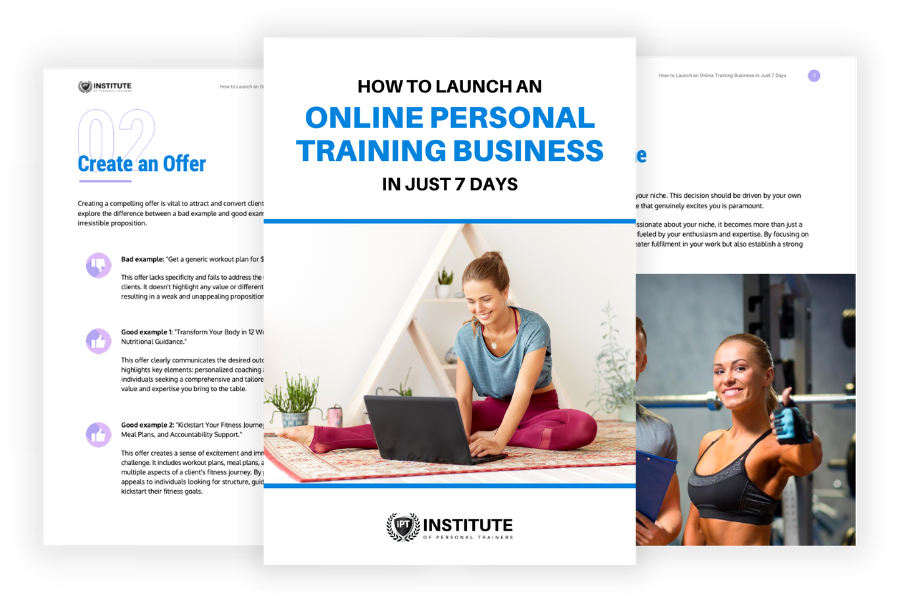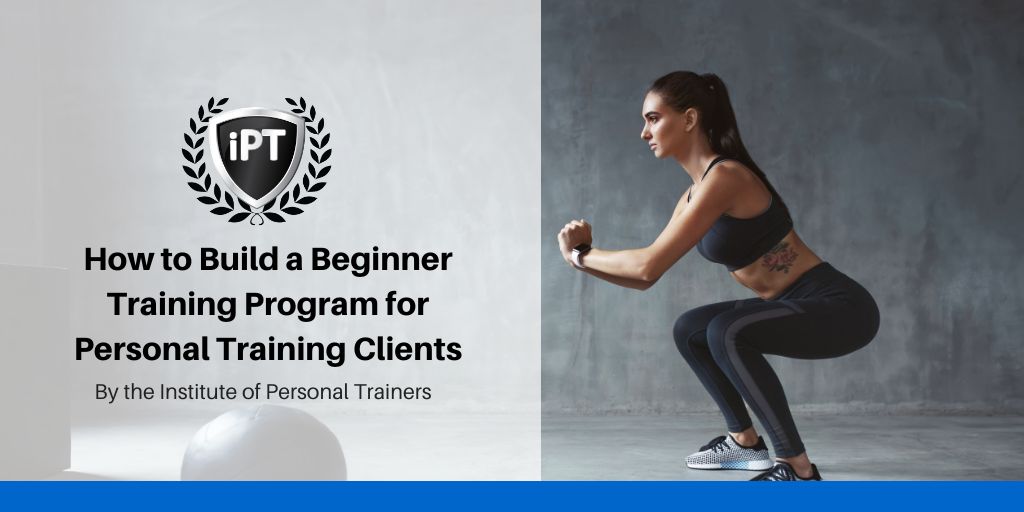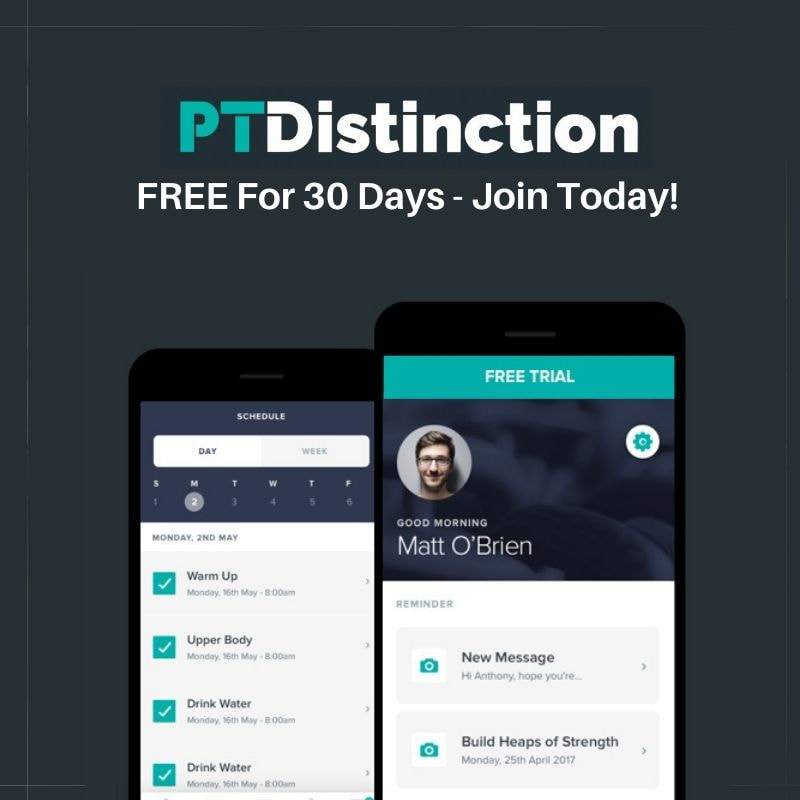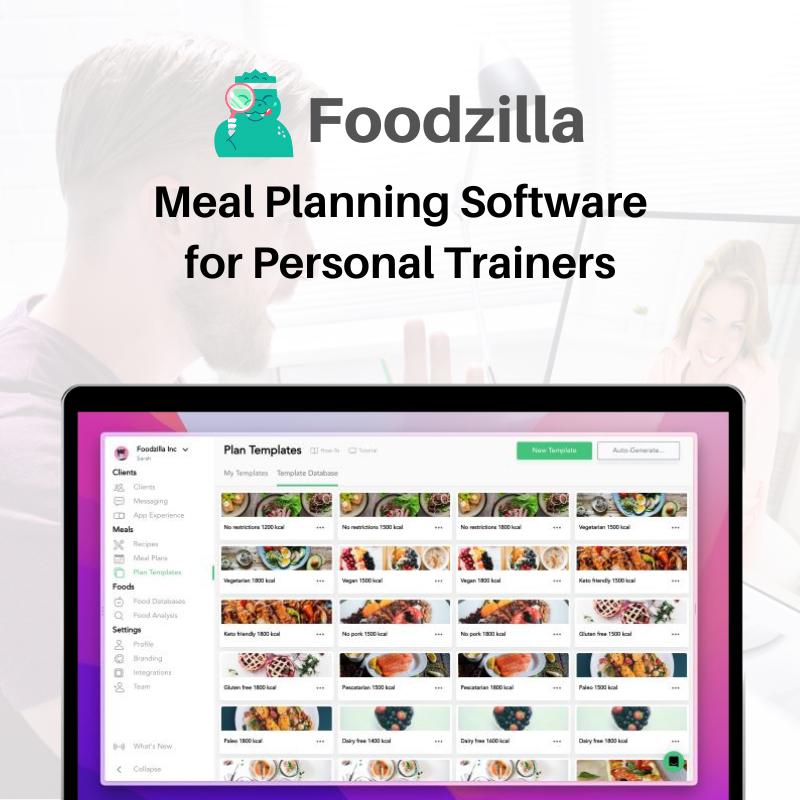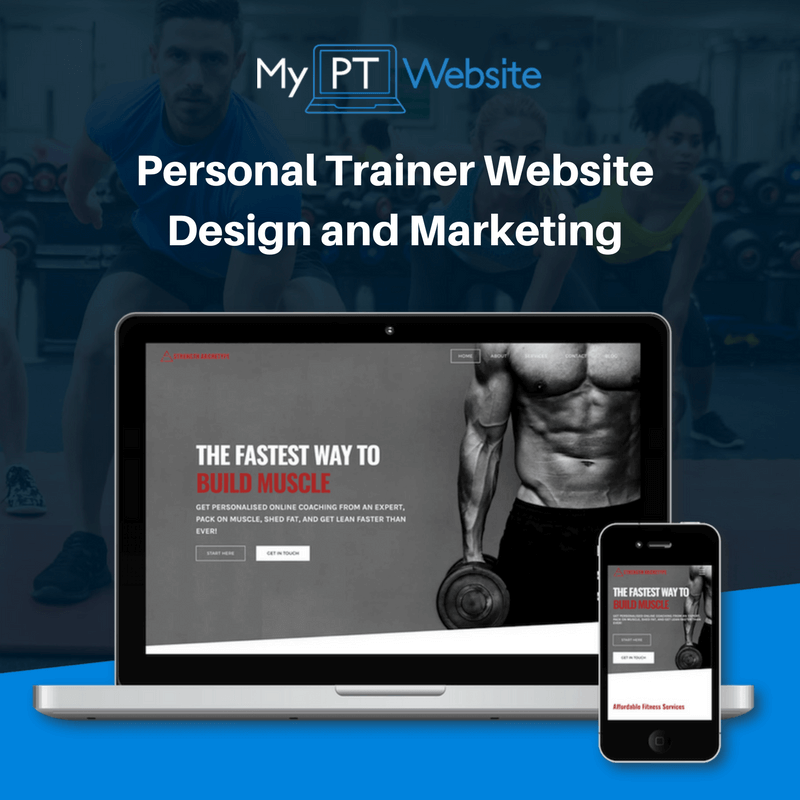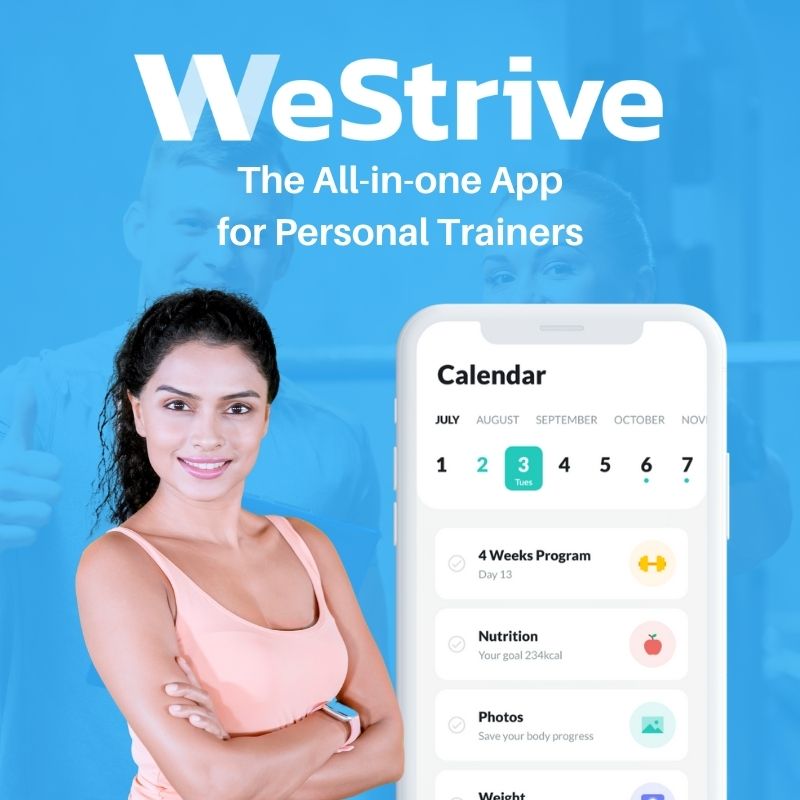|
FREE GUIDE: HOW TO LAUNCH AN ONLINE PERSONAL TRAINING BUSINESS
IN JUST 7 DAYS
✓ The new, better way of launching an online business
✓ The fastest way to create in irresistible offer ✓ A simple system to sell to clients who are interested |
|
As a personal trainer who has spent years in the gym, dialling it back and developing a workout program for a complete beginner is not always easy. If you give your client too much to do too soon, you could overwhelm them and scare them off. The key is to start with simple yet effective exercises, adding variety to keep things interesting. As a confident personal trainer, you probably don't think twice about walking into a gym. For new clients, it's quite the opposite. They may have had butterflies all day, worried they will be judged or afraid that they won't be able to do the exercises you have in store for them. Because of this, your first objective for a beginner client's workout plan is to build their confidence, make them feel welcome, and ease their anxiety. Keep things simple and easy, so your client can achieve a few small wins, creating self-belief and ensuring their mindset is right for the journey ahead. It is all about setting the tone and creating a positive feel. 6 Steps to Build Successful Workout Programs for Beginner Clients If you've found yourself staring at a blank notepad, wondering where to begin and how the best personal trainers in the world program their workouts, don't worry; we will take you through the steps to follow to put together a great workout program for a beginner. Step 1. Understand Your Client You can't build a workout plan without understanding your client.
It is crucial to design a tailored workout plan that meets clients where they are and allows them to work towards their goals progressively. If the program is too easy, they won't perceive it as excellent, but if it's too hard, they may quit before making any gains. Understanding their level is vital. After all, a novice trainee who has never been in a gym before will require a different approach than a former college athlete. Step 2. Choose Rep Range Determining a rep range should always be your starting point. Once you have done this, everything else, from tempo to sets, will fall into place. Many trainers opt for an 8 - 12 rep range by default. However, this long set can be a struggle for beginners, with many losing their focus and form. Instead, 6 - 8 reps is a good starting point for a beginner. After you have selected a rep range, you can determine exercise variety, tempo, and rest intervals:
Step 3. Decide on a Warm-Up Routine The warm-up is essential to help your client's body get ready to cope with the demand you'll put it through during their session. It also helps the client to start focusing on their body before going in deep. A thorough warm-up should last between five and 10 minutes for the general population, a little longer for older clients and certainly longer for heavy sessions. The objective is movement preparation, mobilizing, and raising their heart rate. The StairMaster, bike, or treadmill are ideal for the latter. The bike is usually an excellent place to start, as it is a piece of equipment most people understand. Mobilization should focus on getting the joints ready for the workout. Generally concentrating on wrists, shoulders, thoracic spine, hips, knees, and ankles is an excellent way to prepare clients for a full-body beginner workout. Step 4. Choose the Exercises When selecting exercises, think about scalability and the magnitude of the training effect they achieve. Advanced movements like the Bulgarian split squats, lunge variations or movements that need technical skills like the clean are not necessarily better than a simple deadlift and squat workout. It all comes down to the answer to the questions in step 1. Exercises can be split into three categories; primary, secondary, and tertiary. Primary exercises Choosing primary exercises will come to you intuitively as time goes on. These are the movements designed to give your client the most gains. To begin with, aim to choose up to four primary exercises, as you don't want to overwhelm the client. This will be the section of their session that will take the longest. Remember, you aim to develop their confidence at this point. Multi-joint movements work best. Just keep it simple and at their level. Some good options include variations of squats, chest presses, lat pulls or even lunges. Secondary exercises Secondary exercises are designed to keep your client moving forward, offering more fun and flexibility when compared with the primary movements. You will be focusing more on single-joint movements here, and remember that your client's energy levels are starting to dip by this point. If the goal is to fatigue the muscles for size, this is when you do it. For power workouts, you could consider the likes of single-leg squats or single-leg bridges. Tricep kickbacks and single-leg deadlifts work well for muscle endurance or bodybuilding goals. Choose the exercises here based on your clients' weaknesses and areas of improvement. Tertiary exercises Depending on the time available, tertiary exercises can follow secondary movements or fit into active rest between sets. These can include core work, mobility exercises or even a short burst of HIIT before cool down. Step 5. Don't Forget About Cardio Adding in some cardio is a must. Again, low-intensity cardio makes sense initially, so you're building your client's confidence. You can then look at your client's program in the scope of the week to determine where it would make sense to increase the intensity. Unless your client has a specific goal, such as running a marathon, you can use a variety of modalities to keep things fresh. A hybrid approach to training can serve multiple goals, including weight and fat loss, improving fitness levels, becoming stronger and preparing for any active challenge, whether the local park run, a hiking holiday or a special event. So, you might program 2-3 resistance training workouts for a beginner client and add another 2 cardio sessions on non-training days. This will help them be active 5 days without overdoing it, and cardio can be a great recovery session between lifting weights. Step 6. Review and Tweak When reviewing your client's final workout program, ask yourself "why?" for each exercise you included. If you cannot answer this question for an element of the workout plan, this is a sign that you need to revisit it. A well-designed fitness plan is purpose-built while also considering the client's preferences, so each element there would need to have a reason to be included. Whether that's to build strength in the legs, raise the heart rate or just so the client can enjoy the session are valid reasons so long you're clear on them. Wrapping Up We hope this guide has given you some clarity and directions when programming personal training workouts for beginner clients. By putting yourself in the client's shoes, you ensure you do not overwhelm them. Focusing on increasing their confidence and helping them achieve small wins quickly will increase the chances of sticking around and moving on to the next phase of their workout plan with you.
|
Our All In One Platform
Check out out all in one business & marketing platform for personal trainers!
WEBSITE BUILDER | FUNNELS |MEMBERSHIPS | SCHEDULING| EMAIL MARKETING| PAYMENTS| CRM | AI ASSISTANT | SURVEYS
Popular Articles
Trusted Partners
We work closely with some of the best service providers in the fitness industry.
Categories
All
|

